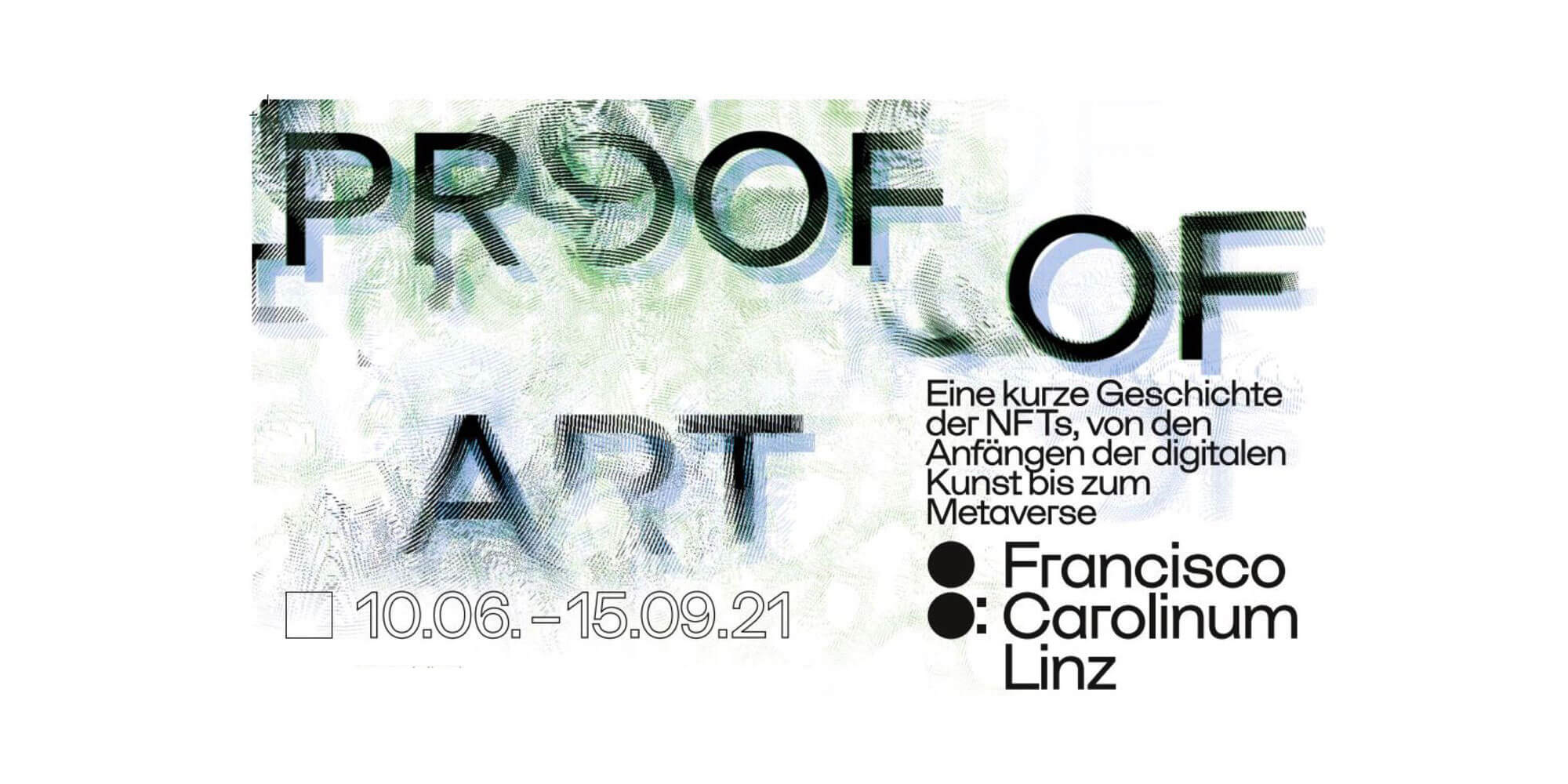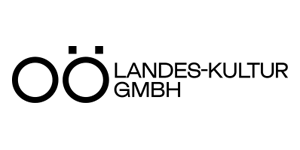Öffnungszeiten
TUE – SUN, Holidays: 10 – 18
MON: closed (open on holidays)
All times CEST / UTC +2
Francisco Carolinum Linz Website
From the beginnings of digital art to the metaverse
Curated by Jesse Damiani, co-curated by Fabian Müller and Markus Reindl
OÖ Landes-Kultur GmbH presents PROOF OF ART, the world’s first museum exhibition on the history of NFTs and digital art. Congruously to the topic the show is viewed offline at the Francisco Carolinum but also online in Cryptovoxels, a blockchain-based virtual world. In light of the developments surrounding NFTs in art and the art market, a retrospective of their history – and why they are suddenly on everyone’s lips – becomes compelling.
First of all, NFTs are a technology designed to solve a problem: the overabundance of digital files. The NFT, on the other hand, is a means of certifying authenticity for each digital file that is stored in the blockchain, thus rendering these files unique. NFTs also function as digital signatures of artists.
The current debate about NFTs hits its hitherto peak in the controversial discussion about digital art. But the NFT hype in 2020 and 2021 has a long prehistory. Although the underlying technology has existed for years and is used by the capital market, the turnaround and the attention by a wider public was ultimately the achievement of artists. Because with the rise of NFT marketplaces, the economic potential of this new system has now become attractive for artists. This also shifted the debate from dealing with artistic concepts to aesthetic positions. The discussions about NFTs, which have so far been dominated by the art market and art criticism, force public cultural institutions to fulfill their responsibility and to ask fundamental questions about the artistic, material and sociological value of digital art and to give answers.
With PROOF OF ART, OÖ Landes-Kultur GmbH is bearing this challenge and is giving an overview of the origins of NFTs and their development: from first formative attempts with digital technologies, through first artistic experiments with the blockchain, to current crypto art. Both off- and online, the multimedia exhibition presents around 25 positions by artists who deal with the new system of meaning and values, examines the role of artists in their high-tech environment and discusses the effects of virtual spaces on our everyday life.
The main question the exhibition investigates is rather simple: what is the development’s basis? Which artists have been working with record-based art before the NFTs turned the world upside down? What were their expectations from decentralization before there was even a hint of monetary output? What does it mean to determine the worth of oneself or one’s art? Could technological automation lead to a positive systemic change?
The rise of centralized marketplaces for NFT-powered art made Crypto Art popular – due to the players that usually dictate content, control access, and manage finances. To put it straight: A technology that has been hailed to establish a more balanced power structure is only using common structures of mastery. But as it happens frequently: it needs a troubleshooter to change our perspective and NFTs force us to realign our point of view, they provide us with the overall chance to discuss, debate and to rethink and change our current value system. Conceptually, the focus has shifted from experimental works of the early and mid-2010s to work that gestures toward the metaverse, a hybrid space that combines the physical and digital worlds. PROOF OF ART unites these newcomers, many of whom are self-taught outsiders, with digital, new media, and crypto artists working in these arenas before the rise of NFT marketplaces. All of these artists inform the discussion about the new standards by which art is “successful” and can be received as such.
As a result of these red-hot discussions, the OÖLKG acquired an NFT property in Metaverse Cryptovoxels on April 24, 2021 where it opened the digital offshoot of its museum for photo and media art: the “DFC Francisco Carolinum” located at 17 Clarion Alley on the island of San Francisco. In addition to various exhibitions, there will also be a space for discussing the legal questions that arise around NFTs for artists, museums and collectors – where, parallel to the opening of PROOF OF ART at Francisco Carolinum in Linz on June 11, 2021, the fourth chapter of the exhibition will be opened.
Credits
Participating artists at Francisco Carolinum Linz
!Mediengruppe Bitnik, Kevin Abosch, Ai Wei Wei, Refik Anadol, Nancy Baker Cahill, Blake Kathryn, Cryptowiener, Simon Denny, Harm van den Dorpel, Constant Dullaart, Primavera de Filippi, Finest Rares (Jason Rosenstein), Herbert W. Franke, Sarah Friend, Fvckrender, Keiken, Larva Labs, Lynn Hershman Leeson, Nili Lerner, Jonas Lund, Marjan Moghaddam, Sarah Meyohas, Rhea Myers, Nam June Paik, Anna Ridler, Mark Sabb (Felt Zine), Terra0
Participating artists at DFC Francisco Carolinum
Claudia Hart, Addie Wagenknecht, Sasha Katz, Gisel X Florez, CryptoYuna, Helena Sarin, kyt, lulu xXX, Flufflord (Tea Stražičić), VXN (Victoria Campobello), Joaquina Salgado, Serwah Attafuah, Krista Kim, Itzel Yard (IX Shells), Grimes x Mac, Hackatao, LaTurbo Avedon, REEPS100 (Harry Yeff) & Trung Bao, Ness Nissla, kai (Kaigani Turner), Chris Torres, Coldie, Alexander Reben, Olive Allen, Mario Klingemann, SIRSU (Ameer Suhayb Carter), Robert Alice, Robert Gallardo, Casey Reas, Hideki Tsukamoto, Kenny Schachter, Matt Kane, Carlos Marcial, Keiken



